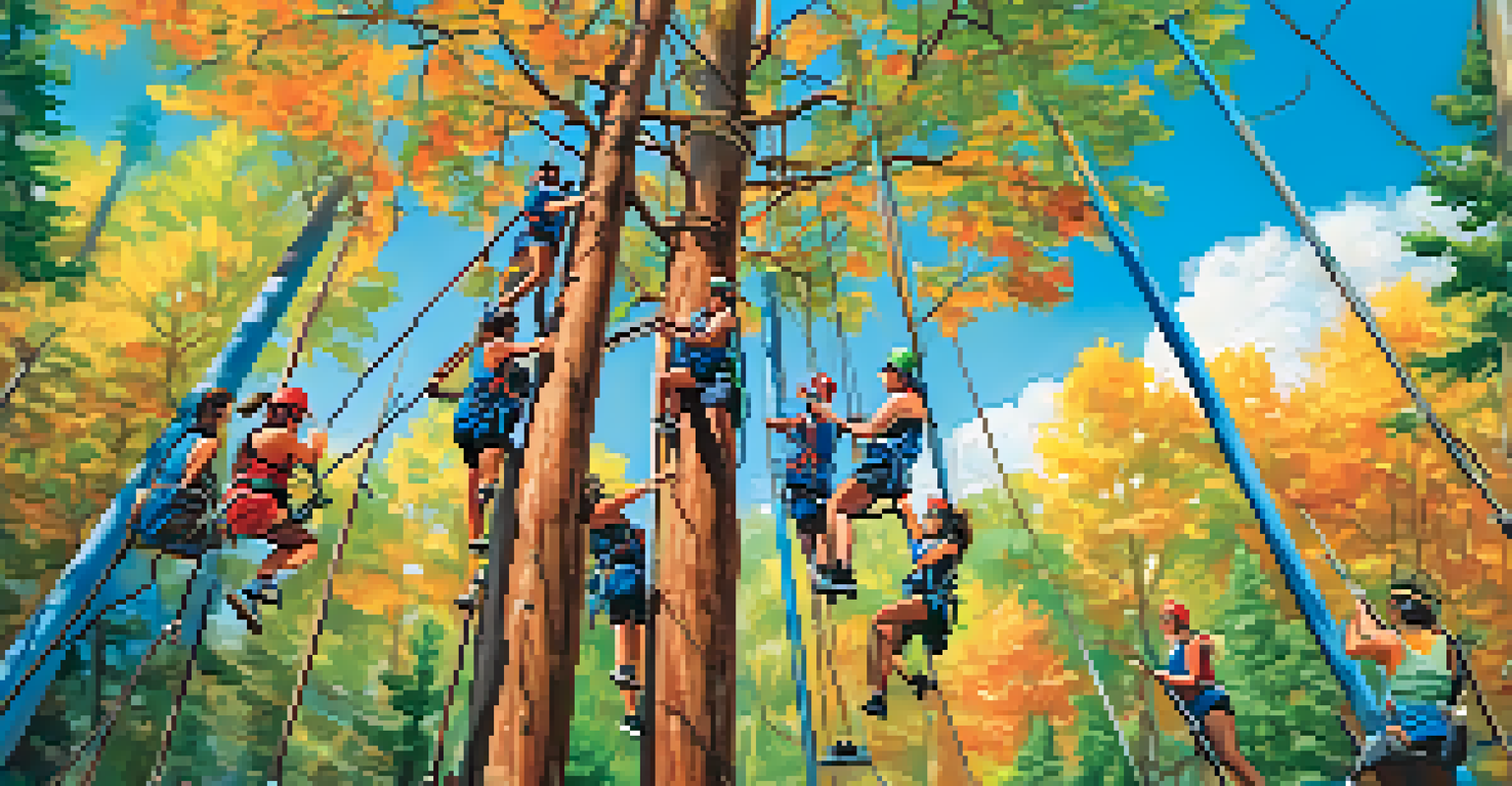Enhancing Communication Skills Through Outdoor Activities

The Connection Between Communication and Outdoor Activities
Outdoor activities provide a unique setting that fosters communication. Being in nature often puts people at ease, allowing for more open and honest dialogue. This relaxed atmosphere encourages individuals to express their thoughts and feelings without the pressures of a formal environment.
In every walk with nature one receives far more than he seeks.
When participating in group activities, such as hiking or team sports, individuals are prompted to share ideas and collaborate. This necessity for teamwork can enhance verbal and non-verbal communication skills, as participants must listen attentively and respond appropriately to each other.
Moreover, the dynamic nature of outdoor settings presents various scenarios that require quick thinking and adaptability in communication. Navigating trails or solving challenges together cultivates a sense of camaraderie, further strengthening bonds and improving overall communication.
Building Teamwork Skills Through Group Activities
Engaging in outdoor group activities, such as obstacle courses or camping trips, necessitates teamwork. Participants must rely on one another to achieve common goals, which promotes effective communication. When individuals work together toward a shared objective, they hone their ability to articulate ideas clearly and listen to feedback.

For instance, during a group hike, one person may suggest a new trail, sparking discussion about its difficulty and scenic value. This exchange of information enhances decision-making skills and encourages everyone to voice their opinions, further refining their communication abilities.
Communication Thrives Outdoors
Outdoor activities create a relaxed environment that encourages open and honest dialogue among participants.
Additionally, the diversity of personalities and backgrounds in group activities can challenge individuals to adapt their communication styles. Learning to navigate these differences fosters empathy and understanding, essential elements in effective communication.
Improving Problem-Solving Through Outdoor Challenges
Outdoor activities often involve facing challenges that require quick problem-solving. Whether it's a sudden change in weather or a navigational mishap, these scenarios compel participants to communicate effectively under pressure. This experience can significantly enhance critical thinking and verbal skills.
The greatest gift of the garden is the restoration of the five senses.
For example, in a team-building exercise like a ropes course, participants must discuss strategies to support one another. The need to articulate thoughts clearly and concisely becomes paramount as they work together to overcome physical obstacles, improving their ability to communicate under stress.
Moreover, these challenges create a safe space to practice resilience and adaptability in communication. When participants encounter difficulties as a group, they learn to express concerns and brainstorm solutions collaboratively, further strengthening their communication toolkit.
Fostering Trust and Openness in Group Settings
Outdoor activities naturally promote a sense of trust among participants. As individuals share experiences in nature, they often feel more connected and willing to open up. This shared vulnerability encourages honest communication, which is vital for building strong relationships.
When teammates rely on one another for support during activities like rock climbing or canoeing, they learn to trust each other's skills and judgment. This trust can translate into more effective communication, as individuals feel comfortable sharing their thoughts and ideas without fear of judgment.
Teamwork Enhances Communication Skills
Engaging in group activities fosters collaboration, allowing individuals to articulate ideas and listen effectively.
Additionally, the informal nature of outdoor activities allows for organic conversations to flourish. These interactions can lead to deeper connections and a better understanding of each other's perspectives, enhancing overall communication.
The Role of Non-Verbal Communication in Nature
Outdoor activities often require participants to rely on non-verbal communication cues. Body language, facial expressions, and gestures become essential tools for expressing thoughts and emotions without words. This aspect of communication can be particularly important in group settings where verbal communication may not be as effective.
For instance, during a silent hike, individuals must pay attention to each other's non-verbal signals, such as pointing out interesting sights or signaling for a break. This practice sharpens observational skills and encourages participants to be more expressive with their body language.
Understanding and interpreting non-verbal cues can significantly enhance interpersonal communication skills. By becoming more aware of these signals in outdoor settings, individuals can improve their ability to connect with others in various social contexts.
Encouraging Active Listening Through Engagement
Active listening is a crucial component of effective communication, and outdoor activities can foster this skill. In group settings, participants are often required to listen attentively to instructions or suggestions, which helps cultivate a habit of paying attention to others.
During activities like team sports or group games, listening becomes vital for understanding roles and strategies. This necessity encourages individuals to practice active listening, ensuring they fully comprehend the information being shared.
Trust Builds Stronger Connections
Shared experiences in nature promote trust and openness, leading to deeper conversations and improved relationships.
Moreover, the collaborative nature of outdoor activities allows for opportunities to provide feedback. Participants can practice summarizing what they've heard and responding thoughtfully, further enhancing their listening and communication skills.
Creating Lasting Connections Through Shared Experiences
One of the most rewarding aspects of outdoor activities is the lasting connections formed through shared experiences. The bonds created during these activities often lead to more profound conversations and a better understanding of one another. These connections can serve as a foundation for improved communication long after the activity ends.
For example, participants who conquer a challenging hike together often share stories of their journey, deepening their relationships. This storytelling aspect fosters a sense of community and encourages individuals to communicate more openly with one another.

Ultimately, the memories created during outdoor activities can act as conversation starters and reminders of the importance of connection. These experiences can inspire participants to continue nurturing their communication skills in everyday life.